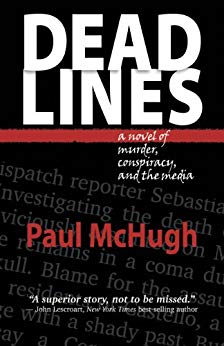California North Coast Series: A Kayak Adventure
Paul McHugh, Outdoors Writer
September 13, 2005
Our launch off Hidden Beach was a study in patience. Onshore wind seemed weak, but the northwest swell was mighty, a robust ten feet high at a seventeen-second interval, similar to the pile-driving waves that had drilled me into sands of the Klamath Bar. Luckily, this beach’s lateral angle and the buffer of Redwood Creek’s offshore sandbars meant that the full power of that swell wasn’t being delivered here straight on, but more obliquely. That gave us a fighting chance to achieve a safe launch.
All one needed to do was drag the kayak to the high water mark of the last wave of a big set, jump in and snap the spray skirt on in a nautical equivalent of a Le Mans-style start, use the backwash of that wave to launch into a smaller set, and paddle like hell before the next big set arrived. If your timing was good, it was a piece of cake. (One must admit that, in kayaking, the line between a piece of cake and a piece of caca often seems rather thin.)
But in this instance, we all did well.
The Shifty Pacific
A heuristic for ocean kayaking grew in my awareness over course of this voyage. It runs as follows: the Pacific can change during every half-hour, and over the course of each half-mile. This navigational axiom comes geared up with corollaries. First, if conditions look bad, just wait. (Also true if conditions look good!) Another is, the best-laid plans of any navigator constitute, at optimum, some sort of mild and tiny suggestion to our cosmos. To insist on paddling your plan after a situation turns unwelcoming is like painting a bullseye around your rectum, then afixing a “Kick Me Hard!” Post-It to a lumbar vertebra.
Actually I’d planned this Tuesday as a short outing that ran just a few miles south to Big Lagoon. I figured we’d accomplish another beach landing, then go through the lagoon’s calm waters to a county park at the south end – where we possessed reservations – and camp in relative comfort. Perhaps even, I fantasized, we could fish for our dinner in the lagoon itself.
Ha.
It was not to be. That northwest swell dropped full frontal impact on the barrier beach of the lagoon. Hydraulic explosions ensued that flung gouts of spume into the sky with considerable enthusiasm. It only took about a two-second consultation with my companions to determine that we would skip trying to land on this beach. Instead, we’d paddle straight on to the next days’ finish line, the sheltered College Cove at Trinidad State Beach, where I’d also secured special permission to camp. This meant polishing off a route of some eighteen miles, but there was literally no sane alternative to attempting that.
Sea Lion Central Station
But soon I found we had an early pay-off. The zone between the Patrick’s Point headland and Trinidad Head was loaded with sea stacks – tall offshore rocks, some the size of small islands – that dissipated most of the power of the swell, while also providing shoreline condos for abundant sea life. We observed flights of brown pelicans and black cormorants, surf scoter ducks and marbled murrelets, even a pink-legged oystercatcher or two. I threaded the rocks further inside than my companions, and found that zone formed a home for mob after mob of Steller sea lions, most hauled out on rock ledges, and many barking their one-note aria in an endless, unyielding cacophony.
Ork! Ork! Ork! Ork Ork! Ork! Ork! Ork! Ork! Ork… !
“Right, these dudes love to chat, they’re trying to express themselves,” I told John Weed. “I get that. But why’s it have to be always the same syllable? Think they’d try to invent a new one, after a few thousand years…”
We rounded Omenoku Point and rode swells into the cove. Here lay welcome shelter from wind and wave, crowned by a long and level arc of fluffy sand. As I approached my landing, I felt lulled into carelessness, jammed my paddle blade into the sand at an awkward angle while the weighty kayak glided in and a sudden twist of the shaft ripped open water-softened skin on my fingers. Damn! Hadn’t seen that coming. And with many more paddle days to come, it would likely not prove an easy wound to heal.
May I Borrow Some Water?
As a camp, this cove left a few things to be desired. Yes, we had a range of great places to pitch a tent, but as far as advantages were concerned, that was it. Since we’d grown rather low on drinking water, I volunteered to forage. Toting my biggest MSR bladder, I hiked up a trail, through the woods and out of a park. Finally I came to a suburban house and rapped on the door. No response. But I did spot a garden hose. Preparing a voluble array of excuses in my mind – all ready for me to spew out at the drop of a, “Hey you!” — I filled my bladder from the hose.
I was even prepared to offer the homeowners money, should they return. But no one appeared. So I thought, no harm, no foul, as I walked away with my sack of fresh H2O.
And back at camp, John Weed strummed guitar chords into the gathering night. I believe the tune was, “Ghost Riders in the Sky,” a perennial favorite. Barnes and I joined in on mouth harp.










